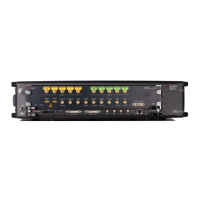The advancement mode specifies the way of how one element like a segment, sequence
or scenario advances to the next element or how it is repeated.
The advancement mode can be individually specified for each single element. The exact
behavior depends on the sequencing, arm and trigger mode.
There could be different advancement modes on different hierarchy levels. Some of
these modes require an advancement event to proceed. In cases where the
advancement event has to be evaluated simultaneously in multiple hierarchy levels, the
output behavior could be unexpected, especially when conditional advancement modes
are used. For more details, refer to the examples given in the section Sequencer Modes.
After having executed all loops, the sequencer advances to the next element
automatically. No external interaction is required for advancement.
The sequencer repeats the current element until it receives the correct advancement
event. After having received the advancement event, the current element is played to
the end before switching to the next one.
After having executed all loops the sequencer stops and plays the last value of the
current element. After having received the advancement event, the sequencer starts
playing the next element. When receiving the advancement event before having played
all repetitions, all repetitions will be played before moving to the next element.

